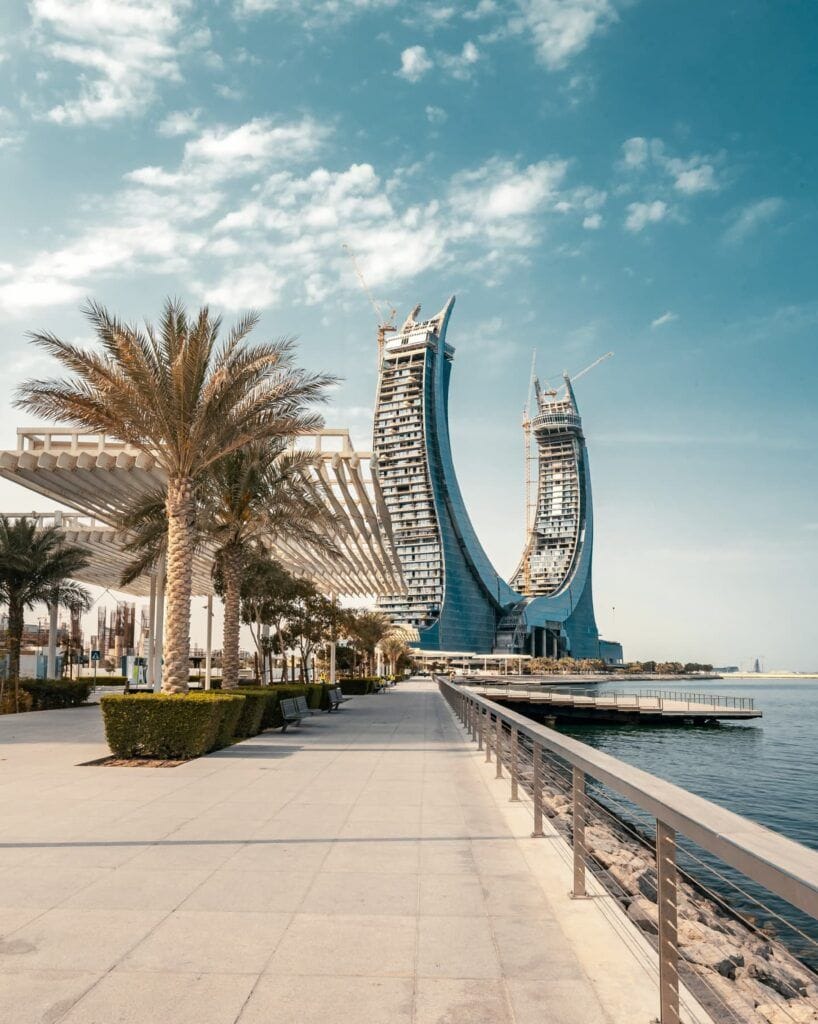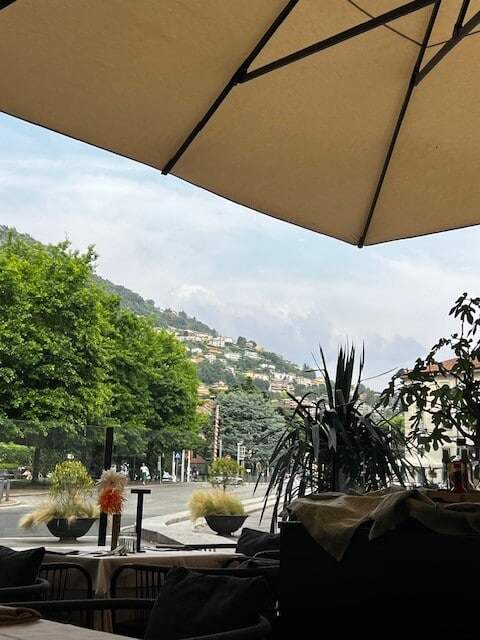Architecture in Qatar and the UAE: Between Ambition and Civilizational Challenges
Architecture in Qatar and UAE has become a defining feature as these nations have emerged as two of the most ambitious countries investing heavily in large-scale infrastructure and architectural projects over the past two decades. This development, fueled by oil and gas revenues, has led to the creation of cities that blend technological advancement with futuristic design. However, architecture in Qatar and UAE also faces criticism on various levels. This article explores the evolution of architecture in both countries, analyzes the motivations behind such investments, and outlines the challenges associated with these urban transformations.

How Did It Begin?
In the late 1990s, with rising oil prices, leaders in Qatar and the UAE began reimagining their urban landscapes. The goal was not only to improve the quality of life for citizens but also to strengthen national identity and attract global tourism and investment. As a result, the architecture in these regions became a tool to express economic power and political ambition closely related to architecture in Qatar and the UAE.
Ambitious Urban Models
Both countries focused on developing major projects such as:
- Cultural museums to promote national heritage and Islamic identity.
- Sports stadiums , especially in preparation for international events like the 2022 World Cup in Qatar.
- Artificial islands and closed communities , including The Pearl in Qatar and Palm Jumeirah in Dubai.
- Smart business centres and innovative buildings , such as the skyscrapers of Abu Dhabi and Masdar City projects.
These developments reflect new urban visions based on technology and modern public space design, showcasing architecture in Qatar and the broader UAE as leaders in innovation.

Environmental and Architectural Challenges
Despite the aesthetic appeal of many projects, they face real challenges, including:
| Challenge | Description |
|---|---|
| Environmental sustainability | High consumption of water and energy in an arid climate. |
| Use of non-local materials | Dependence on imported construction materials, increasing environmental costs. |
| Extreme heat | Projects require intensive cooling systems, which increase carbon emissions. |
According to reports from institutions such as the World Bank, these developments need more comprehensive policies to balance growth with environmental responsibility. Architectural endeavours in Qatar and UAE continually seek this balance.

Labour Conditions and Human Cost
This construction boom has not been without controversy, particularly regarding the working conditions of expatriate labour. In many cases, reports have highlighted difficult working environments and lack of human rights protections. Reports from organisations such as Human Rights Watch have drawn attention to these issues, leading to domestic and international calls for reform related to construction and architecture.
“Improving workplace conditions and applying safety standards is essential to making these projects exemplary.”
— Human Rights Watch, 2021 report.
Can These Experiences Be a Model for Other Countries?
The answer is complex. On one hand, these countries have financial capabilities that are unavailable to most developing nations, making it difficult to replicate their model. On the other, reliance on fossil fuel wealth makes these models unsustainable in societies with limited resources. Architecture in Qatar and UAE showcases both innovation and challenges when considered as models.
However, certain practices—such as investment in architectural education or the development of sustainable building technologies—can serve as inspiration for architecture practitioners globally.

Frequently Asked Questions (FAQ)
| Question | Answer |
|---|---|
| Why do Qatar and the UAE invest so heavily in architecture? | To boost the economy, attract investment and tourism, and improve infrastructure. |
| Are these projects environmentally sustainable? | Some include smart solutions, but many rely on high energy and water consumption. |
| What role does expatriate labour play in these projects? | They play a central role, but often face challenges related to working conditions and rights. |
| Can other countries copy these models? | With difficulty, due to differences in financial resources and economic structure. |
Summary Table of Key Points
| Theme | Main Points |
|---|---|
| Background | Investment increased after oil and gas discoveries |
| Projects | Museums, stadiums, artificial islands, business centres |
| Challenges | Water and energy consumption, extreme heat, working conditions |
| Future | Need for long-term sustainability plans and local solutions |
| Experience | Inspiring but not easily replicable without adjustments |

ArchUp Opinion
While Qatar and the UAE have achieved significant structural accomplishments, this experience remains tied to exceptional economic and social circumstances. It represents a model where money is used as a means to transform a country into a global hub, but not necessarily a model that reflects balance between development and social justice. The architectural landscape in Qatar and UAE exemplifies this dynamic.
The main critique lies in the absence of long-term planning that considers environmental sustainability and equitable distribution of benefits. Additionally, the lack of community involvement in shaping these projects reduces their chances of success from a human perspective, especially in regions focused on architecture like Qatar and the UAE.
Therefore, these projects can be seen as a model of economic strength, but they require rethinking in order to become true examples of comprehensive development.







